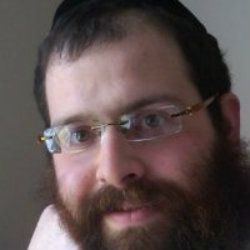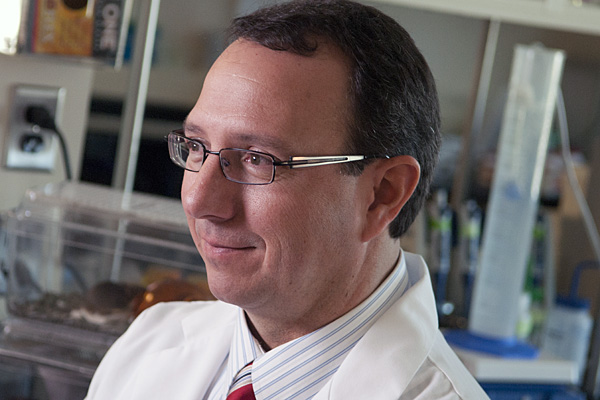
Profiles 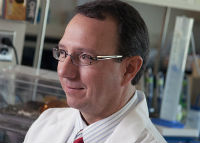 The research for a treatment of Angelman Syndrome is being led by Dr. Edwin Weeber, a professor of molecular pharmacology and physiology at the School of Biomedical Sciences, University of South Florida. He graciously agreed to an interview about Angelman Syndrome and his ongoing research
The research for a treatment of Angelman Syndrome is being led by Dr. Edwin Weeber, a professor of molecular pharmacology and physiology at the School of Biomedical Sciences, University of South Florida. He graciously agreed to an interview about Angelman Syndrome and his ongoing research
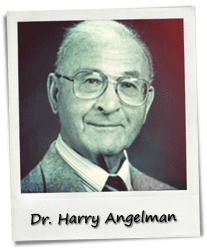 Angelman syndrome (AS) is a genetic disorder that occurs in approximately one in every 15,000 births, although it is often misdiagnosed so the actual numbers may be higher. AS was first characterized by Dr. Harry Angelman in 1965 after he noticed similar phenotypes in several pediatric patients.
Dr. Angelman was a general pediatrician who had three children under his care with similar characteristics, such as similar facial structures, frequent laughter, and gestures such as hand-flapping.
[caption id="attachment_8250" align="alignright" width="200"]
Angelman syndrome (AS) is a genetic disorder that occurs in approximately one in every 15,000 births, although it is often misdiagnosed so the actual numbers may be higher. AS was first characterized by Dr. Harry Angelman in 1965 after he noticed similar phenotypes in several pediatric patients.
Dr. Angelman was a general pediatrician who had three children under his care with similar characteristics, such as similar facial structures, frequent laughter, and gestures such as hand-flapping.
[caption id="attachment_8250" align="alignright" width="200"] “Boy with a Puppet”[/caption]
He originally called them “puppet children” not only their unique marionette-like movements, but also for a painting, titled “Boy with a Puppet”, which he felt had similar facial features to his patients.
Although he suspected a similar underlying cause in the children, he could not identify it at the time. As more children were subsequently diagnosed, the name was changed to Angelman syndrome. Thirty years would go by before researchers identified the gene responsible for AS (the UBE3A gene).
“Boy with a Puppet”[/caption]
He originally called them “puppet children” not only their unique marionette-like movements, but also for a painting, titled “Boy with a Puppet”, which he felt had similar facial features to his patients.
Although he suspected a similar underlying cause in the children, he could not identify it at the time. As more children were subsequently diagnosed, the name was changed to Angelman syndrome. Thirty years would go by before researchers identified the gene responsible for AS (the UBE3A gene).
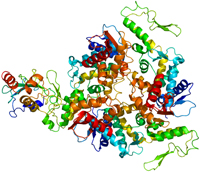 The UBE3A Gene[/caption]
A parent that is a carrier is very rare, but it can happen. There are known cases of multiple siblings with AS. This can happen through inheritance of a mutation in UBE3A from father (Grandfather) to daughter (Mother), then the daughter may pass this on to her children who then are diagnosed with AS. The grandfather and mother show no signs of AS because the paternal UBE3A gene is silenced in both of them. Only when it is inherited from the mother is there a maternal disruption of the gene.
The UBE3A Gene[/caption]
A parent that is a carrier is very rare, but it can happen. There are known cases of multiple siblings with AS. This can happen through inheritance of a mutation in UBE3A from father (Grandfather) to daughter (Mother), then the daughter may pass this on to her children who then are diagnosed with AS. The grandfather and mother show no signs of AS because the paternal UBE3A gene is silenced in both of them. Only when it is inherited from the mother is there a maternal disruption of the gene.
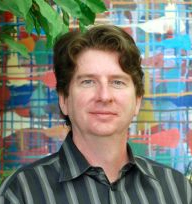 Dr. David Sweatt[/caption]
That is a long story, but in a nutshell: After receiving my Ph.D. in Neuroscience from the University of New Mexico, I traveled to Houston, Texas and joined the lab of Dr. David Sweatt at Baylor College of Medicine.
Dr. Sweatt is a brilliant neuroscientist and I was lucky to land in his lab. His laboratory was one of the first to use a multidisciplinary approach to studying learning and memory. For example, he would systematically knockout genes in the mouse believed to be involved in memory formation, and then examine the brain morphology, behavior, synaptic function and biochemistry all at one time. Most labs at the time were only capable of performing one or two of those types of techniques.
[caption id="attachment_8263" align="alignright" width="190"]
Dr. David Sweatt[/caption]
That is a long story, but in a nutshell: After receiving my Ph.D. in Neuroscience from the University of New Mexico, I traveled to Houston, Texas and joined the lab of Dr. David Sweatt at Baylor College of Medicine.
Dr. Sweatt is a brilliant neuroscientist and I was lucky to land in his lab. His laboratory was one of the first to use a multidisciplinary approach to studying learning and memory. For example, he would systematically knockout genes in the mouse believed to be involved in memory formation, and then examine the brain morphology, behavior, synaptic function and biochemistry all at one time. Most labs at the time were only capable of performing one or two of those types of techniques.
[caption id="attachment_8263" align="alignright" width="190"]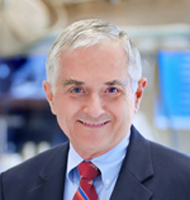 Arthur L. Beaudet, M.D.[/caption]
Down the hall from Dr. Sweatt was Dr. Arthur Beaudet’s laboratory. He co-discovered the gene and developed the mouse model for AS almost 15 years ago. This was revolutionary!
Instead of just disrupting genes thought to be involved in a memory disorder, this lab had identified THE gene involved in AS. The labe then located the same gene in the mouse, then disrupted that gene to make a true human cognitive disorder mouse model.
I was hooked immediately. To Dr. Beaudet’s and Dr. Sweatt’s credit, and to let everyone know how generous they were, when I left Baylor to start my own lab, they freely gave me the mice to continue my work. These mice are all over the world now, being used by many AS researchers to this day.
Arthur L. Beaudet, M.D.[/caption]
Down the hall from Dr. Sweatt was Dr. Arthur Beaudet’s laboratory. He co-discovered the gene and developed the mouse model for AS almost 15 years ago. This was revolutionary!
Instead of just disrupting genes thought to be involved in a memory disorder, this lab had identified THE gene involved in AS. The labe then located the same gene in the mouse, then disrupted that gene to make a true human cognitive disorder mouse model.
I was hooked immediately. To Dr. Beaudet’s and Dr. Sweatt’s credit, and to let everyone know how generous they were, when I left Baylor to start my own lab, they freely gave me the mice to continue my work. These mice are all over the world now, being used by many AS researchers to this day.
A Treatment for Angelman Syndrome: An Interview with Dr. Edwin Weeber
Every day there are big announcements about the latest advancement in medicine. Generally the bigger announcements are reserved for the more well know conditions such as autism, down syndrome, cerebral palsy and Alzheimers. What you may not realize is that there is some amazing work being done to cure and treat Angelman Syndrome. The research for a treatment of Angelman Syndrome is being led by Dr. Edwin Weeber, a professor of molecular pharmacology and physiology at the School of Biomedical Sciences, University of South Florida. He graciously agreed to an interview about Angelman Syndrome and his ongoing research
The research for a treatment of Angelman Syndrome is being led by Dr. Edwin Weeber, a professor of molecular pharmacology and physiology at the School of Biomedical Sciences, University of South Florida. He graciously agreed to an interview about Angelman Syndrome and his ongoing research
1. What is Angelman Syndrome, and what is its cause?
 Angelman syndrome (AS) is a genetic disorder that occurs in approximately one in every 15,000 births, although it is often misdiagnosed so the actual numbers may be higher. AS was first characterized by Dr. Harry Angelman in 1965 after he noticed similar phenotypes in several pediatric patients.
Dr. Angelman was a general pediatrician who had three children under his care with similar characteristics, such as similar facial structures, frequent laughter, and gestures such as hand-flapping.
[caption id="attachment_8250" align="alignright" width="200"]
Angelman syndrome (AS) is a genetic disorder that occurs in approximately one in every 15,000 births, although it is often misdiagnosed so the actual numbers may be higher. AS was first characterized by Dr. Harry Angelman in 1965 after he noticed similar phenotypes in several pediatric patients.
Dr. Angelman was a general pediatrician who had three children under his care with similar characteristics, such as similar facial structures, frequent laughter, and gestures such as hand-flapping.
[caption id="attachment_8250" align="alignright" width="200"] “Boy with a Puppet”[/caption]
He originally called them “puppet children” not only their unique marionette-like movements, but also for a painting, titled “Boy with a Puppet”, which he felt had similar facial features to his patients.
Although he suspected a similar underlying cause in the children, he could not identify it at the time. As more children were subsequently diagnosed, the name was changed to Angelman syndrome. Thirty years would go by before researchers identified the gene responsible for AS (the UBE3A gene).
“Boy with a Puppet”[/caption]
He originally called them “puppet children” not only their unique marionette-like movements, but also for a painting, titled “Boy with a Puppet”, which he felt had similar facial features to his patients.
Although he suspected a similar underlying cause in the children, he could not identify it at the time. As more children were subsequently diagnosed, the name was changed to Angelman syndrome. Thirty years would go by before researchers identified the gene responsible for AS (the UBE3A gene).
2. What are typical symptoms of AS?
It typically presents with movement problems that may or may not be associated with tremor, lack of speech, frequent laughter, electroencephalographic (EEG) abnormalities, sleep disturbances, seizures that can be difficult to control, and significant cognitive deficits. However, symptoms in AS often vary greatly, which is one of the reasons it is often misdiagnosed. Other characteristics frequently seen in AS patients include fascination with water, a wide mouth with wide spaced teeth, and sometimes it is associated with obesity. Another interesting feature is hypopigmentation, which is a fancy way of saying that some Angelman Patients have light complexion, blond hair and blue eyes despite the skin, hair or eye color of the parents.3. If a parent is a carrier will there be a chance that their child will also have Angelman Syndrome?
[caption id="attachment_8260" align="alignright" width="200"] The UBE3A Gene[/caption]
A parent that is a carrier is very rare, but it can happen. There are known cases of multiple siblings with AS. This can happen through inheritance of a mutation in UBE3A from father (Grandfather) to daughter (Mother), then the daughter may pass this on to her children who then are diagnosed with AS. The grandfather and mother show no signs of AS because the paternal UBE3A gene is silenced in both of them. Only when it is inherited from the mother is there a maternal disruption of the gene.
The UBE3A Gene[/caption]
A parent that is a carrier is very rare, but it can happen. There are known cases of multiple siblings with AS. This can happen through inheritance of a mutation in UBE3A from father (Grandfather) to daughter (Mother), then the daughter may pass this on to her children who then are diagnosed with AS. The grandfather and mother show no signs of AS because the paternal UBE3A gene is silenced in both of them. Only when it is inherited from the mother is there a maternal disruption of the gene.
4. If a child is diagnosed with AS is there a chance that future siblings will also have Angelman Syndrome?
Again, this can happen in rare circumstances. Genetic testing can be performed to determine the genetic cause for the maternal UBE3A disruption. If this is the case, then the mother has a 50-50 chance of passing the defective gene on to her kids, but ONLY if she is shown to carry the mutation. Most cases of AS are due to deletions of varying sizes in the UBE3A gene.5. How did you get interested in AS Research?
[caption id="attachment_8261" align="alignright" width="192"] Dr. David Sweatt[/caption]
That is a long story, but in a nutshell: After receiving my Ph.D. in Neuroscience from the University of New Mexico, I traveled to Houston, Texas and joined the lab of Dr. David Sweatt at Baylor College of Medicine.
Dr. Sweatt is a brilliant neuroscientist and I was lucky to land in his lab. His laboratory was one of the first to use a multidisciplinary approach to studying learning and memory. For example, he would systematically knockout genes in the mouse believed to be involved in memory formation, and then examine the brain morphology, behavior, synaptic function and biochemistry all at one time. Most labs at the time were only capable of performing one or two of those types of techniques.
[caption id="attachment_8263" align="alignright" width="190"]
Dr. David Sweatt[/caption]
That is a long story, but in a nutshell: After receiving my Ph.D. in Neuroscience from the University of New Mexico, I traveled to Houston, Texas and joined the lab of Dr. David Sweatt at Baylor College of Medicine.
Dr. Sweatt is a brilliant neuroscientist and I was lucky to land in his lab. His laboratory was one of the first to use a multidisciplinary approach to studying learning and memory. For example, he would systematically knockout genes in the mouse believed to be involved in memory formation, and then examine the brain morphology, behavior, synaptic function and biochemistry all at one time. Most labs at the time were only capable of performing one or two of those types of techniques.
[caption id="attachment_8263" align="alignright" width="190"] Arthur L. Beaudet, M.D.[/caption]
Down the hall from Dr. Sweatt was Dr. Arthur Beaudet’s laboratory. He co-discovered the gene and developed the mouse model for AS almost 15 years ago. This was revolutionary!
Instead of just disrupting genes thought to be involved in a memory disorder, this lab had identified THE gene involved in AS. The labe then located the same gene in the mouse, then disrupted that gene to make a true human cognitive disorder mouse model.
I was hooked immediately. To Dr. Beaudet’s and Dr. Sweatt’s credit, and to let everyone know how generous they were, when I left Baylor to start my own lab, they freely gave me the mice to continue my work. These mice are all over the world now, being used by many AS researchers to this day.
Arthur L. Beaudet, M.D.[/caption]
Down the hall from Dr. Sweatt was Dr. Arthur Beaudet’s laboratory. He co-discovered the gene and developed the mouse model for AS almost 15 years ago. This was revolutionary!
Instead of just disrupting genes thought to be involved in a memory disorder, this lab had identified THE gene involved in AS. The labe then located the same gene in the mouse, then disrupted that gene to make a true human cognitive disorder mouse model.
I was hooked immediately. To Dr. Beaudet’s and Dr. Sweatt’s credit, and to let everyone know how generous they were, when I left Baylor to start my own lab, they freely gave me the mice to continue my work. These mice are all over the world now, being used by many AS researchers to this day.

